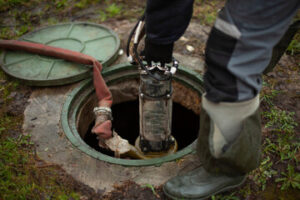A career as an electrician offers a rewarding path for those with the right set of skills. Many aspects of this trade make it interesting and challenging, from repairing wiring to installing advanced technologies like solar panels.
Many electricians start their careers without requiring a degree through vocational training and apprenticeships. They are also able to work independently and set their own schedules. Contact Electrician In Fort Worth TX now!

Almost every home, business and industrial space uses electrical systems. These systems include power, communications, and lighting services. Electricians are trained to handle the various components of these systems, including wiring, circuits, outlets and switches. In addition, they might perform installation, repair, and maintenance on equipment in factories or other industrial spaces.
A skilled electrician can install a wide variety of electrical fixtures, from recessed lights and ceiling fans to outdoor landscape lighting and pool and spa lighting. They can also install a new circuit breaker box, if necessary. The work of an electrician can be hazardous, so it’s important that you have a licensed professional performing this type of installation.
If your home’s electrical wiring is too old, it can become worn out and create a fire risk. Having an electrician extend your existing wiring can reduce the likelihood of this happening, and it will ensure that your property has a safe and reliable electricity supply.
Another common installation service performed by electricians is the installation of GFCI outlets. These are special outlets that contain a component designed to prevent shock. They’re most commonly found in kitchens and bathrooms, but you can find them in laundry rooms, garages and outdoor areas as well. An electrician can properly install and test a GFCI outlet to make sure it works as intended.
Many electricians also perform electrical system upgrades and repairs for homeowners and businesses. Over time, wiring can become damaged or outmoded, and it’s common for older circuit breakers to stop working correctly. During these repairs, an electrician may also replace outdated devices with more energy-efficient options.
Some electricians specialize in residential work, while others focus on commercial or industrial installations. Still, other electricians choose to focus on maintenance or testing. This means that they don’t work on high-voltage lines like linemen, but instead stick to the lower voltages utilized in indoor settings. These electricians are often called “wiremen.” Their responsibilities include the installation, repair and maintenance of low-voltage wiring such as that used in offices, homes and warehouses. They also might install voice-data-video (VDV) systems.
A reliable electrician can troubleshoot electrical problems quickly and efficiently. They can also repair and replace electric and electronic equipment to keep it running at peak performance. A typical troubleshooting process starts with observing equipment for signs of a problem. For example, if an outlet is buzzing or not working at all, it may be due to a tripped circuit breaker or faulty wiring.
Once the electrician is able to pinpoint a problem, they can begin testing with a variety of test instruments. They will often use a multimeter, which can measure AC and DC voltages, resistance, and current. By predicting what the meter should read in a normal circuit and then comparing the actual reading to that prediction, they can identify which part of the electrical system is affected.
Another common electrical problem is a power surge or brownout. This can be caused by many factors, including overloading of a power grid or faulty wiring. If you experience frequent power surges or brownouts, it’s important to have a professional inspect your home electrical system to ensure that everything is safe and up to code.
If you’re experiencing a spark when you plug in a device or feel a slight shock, it is a good idea to call a professional electrician immediately. These signs are usually a result of faulty wiring or overheating, which could lead to fires or injuries.
An expert electrician can assess your home or business’s wiring and make recommendations for improvements. They can install GFCI outlets, which reduce the risk of fires by automatically shutting off power to tripped circuit breakers or faulty outlets. They can also install more dynamic outlets and switches that allow you to control power flow with different settings, such as dimmers, timers, and “smart” plugs.
An electrician can also improve your home’s energy efficiency by rewiring outdated systems. They can add more outlets and switches in hard-to-reach areas, upgrade light fixtures to energy-efficient bulbs, and make sure your entire home is properly grounded and insulated. By implementing these upgrades, you can save money on your electricity bill while reducing the risk of fires and injury.
When electrical problems arise, electricians are the people called to fix them. They can perform a wide variety of electrical repair services, from replacing outlets to rewiring homes. Some of these repair jobs are urgent, such as when a fuse blows or a circuit breaker trips. Other repairs are less urgent but still important, such as upgrading an old fuse box to a newer circuit breaker panel.
When a circuit breaker trips, it’s usually because the wiring is overloaded or outdated. An electrician can upgrade this, ensuring that your home has enough power for all your devices and that it’s as safe as possible.
In addition to working on homes, some electricians specialize in repairing and installing electrical systems for commercial buildings, such as offices and stores. For example, a business might need to increase its computer equipment, and an electrician would install the proper wiring. These electricians also work with architects and engineers to design electrical systems for new construction projects.
Flickering or dimming lights are common electrical repair issues, and many different things can cause them. It could be that you have too many appliances plugged in, or it could be a sign of an overheated outlet or switch. Flickering lights can be especially dangerous for older houses, which may not have grounding or GFCI outlets. An electrician can replace these outlets with a more modern, safer type of outlet.
One of the most common household electrical repair issues is a faulty outlet. These can be very dangerous if left unattended, as they are often a fire hazard and can cause shocks. An electrician can replace these outlets with GFCI outlets that shut off when they sense overheating, preventing fires and potential injuries.
Whether you need a simple repair or a complete rewiring of your entire house, electrical repair professionals are the best way to get the job done right. The price tag will vary depending on the amount of work that needs to be completed, but you can expect an electrician’s hourly rate to play a large role in the final cost.
A home’s electrical system requires regular maintenance in order to stay functional. Electricians offer a wide range of maintenance services, including inspections, testing, and repairs. They can also rewire homes to accommodate new appliances or devices. A licensed electrician will ensure that all wires are connected properly and can withstand the demands of everyday life.
Many electricians are also responsible for maintaining the power, communications, and lighting systems in offices, hospitals, factories, and other commercial buildings. This includes inspecting, testing, and repairing these systems, as well as ensuring that all electrical work meets safety standards and regulations. In addition, electricians may be required to perform routine tasks such as removing trees or shrubbery that interfere with power lines.
Electricians working in an industrial setting often focus on maintenance duties related to heavy machinery and other high-voltage equipment. They may also repair generators and motors, install new wiring or switches, and update the electrical systems of large manufacturing plants. In some cases, industrial electricians are required to consult with engineering technicians or other professional staff members in order to troubleshoot complex electronic equipment.
Because they are responsible for installing and maintaining electrical systems, electricians must be comfortable reading blueprints and schematics as well as using a variety of hand and power tools. They must also be able to identify and solve problems quickly and safely. Additionally, they may be required to inspect, test, and analyze data from a number of sources.
Some electricians are also involved in the installation of renewable energy components and systems. In this capacity, they may be required to work with solar panels, wind turbines, and other green technologies. Additionally, they can install battery backup systems and back-up generators to help ensure that businesses are not interrupted during a power outage.
A career as an electrician can be demanding and rewarding, but it requires a great deal of training and experience. This is why it is important to choose an experienced and licensed contractor to handle your electrical needs. A skilled technician can save you a lot of time and money in the long run and will help you avoid costly mistakes that can damage your home or business.





